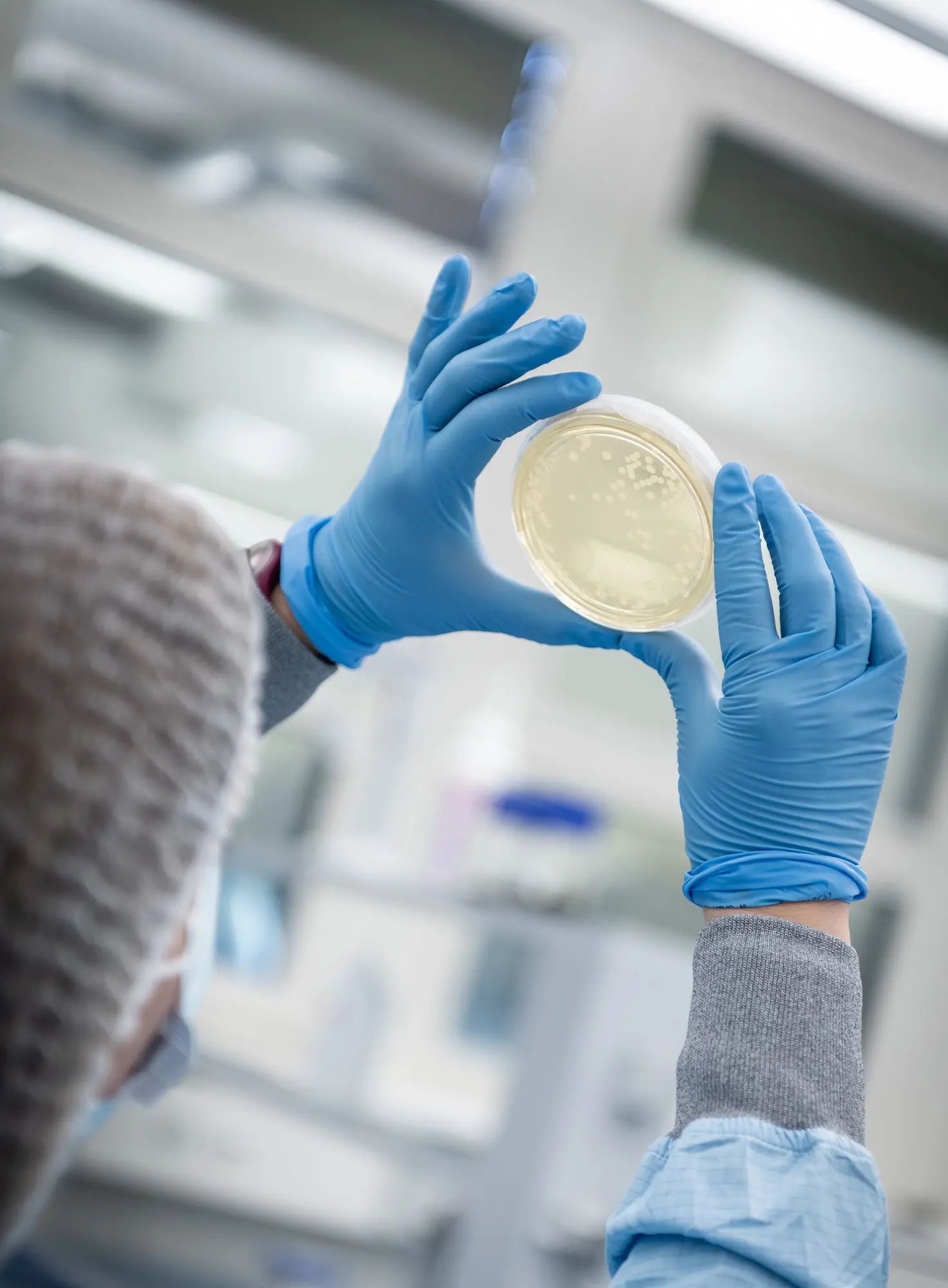In order to be able to determine the quality of decontamination tests, SKAN has developed a method for counting viable, isolated spores. The method is based on the scientific principle that spores are capable of germination and growth on solid culture media and that each microbial colony-forming unit (CFU) represents a direct progeny of a single spore in the original inoculum.
This is done by serial dilution of the spore in a suitable medium after resuspension from the carrier. The final dilution is then plated out on a suitable medium. After the spores have grown into colonies on this medium, they are counted. The Viable Spore Count results correspond to the amount of Geobacillus stearothermophilus spores that were initially inoculated on the biological indicator.

